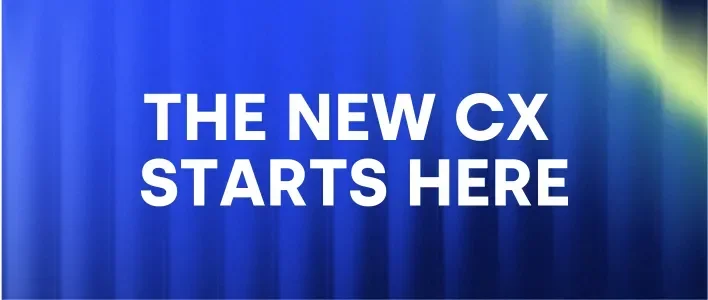
The Contact Center of the (Near) Future
Alvin Toffler’s 1970 book Future Shock illustrates how fast the world moves through technology advances. In the book, he writes:
It took humans millions of years to travel 100 mph (with the steam locomotive in the 1880’s). 58 years later, the speed quadrupled when the fighter jet could fly up to 400 mph. By the 1960’s, astronauts were circling the globe at 18,000 mph. Advances and changes are happening faster and faster, which is why it’s so important to continually be on the lookout for patterns that lead to those changes. Here are some patterns that we’ve seen at SaleMove when talking to our customers and partners, and where we believe the contact center of the (near) future will be going:
Contact Centers Will Become Engagement Centers
Contact center agents, even today, are largely segmented; they have chat, phone and email teams. This is due in part to the fact that some agents don’t have the right tools in order to reach the full potential of their job. Not for long, however; Soon agents will be expected to interact with customers by phone, social media, chat, video and screen sharing as seamlessly as the customer chooses. In a world where people are multitasking like crazy, agents are expected to be ninjas that can do all different types of support tasks, and all equivalently well.
To put this in perspective, customers can connect on an average of 9 different channels, including but not limited to phone, email, and social media sites. This number will only grow as new channels are created. Think about it, Twitter is only about 10 years old. To leverage this engagement, companies will look to seamless cloud-based platforms like Five9 that make the omnichannel experience easy.
Omnichannel and Mobile Will Continue to Grow
There are now more mobile devices than there are people in the world. There are more than 7.2 billion mobile devices, and they’re multiplying five times faster than we are. That means more transactions and customer interactions will take place over mobile devices.
However, the contact center industry is still playing catch up on this trend. Think about it, when was the last time you had a good experience trying to get support on your mobile device? Have you ever gotten support beyond a simple phone call? For example, the experience of talking on the phone and browsing on a mobile device is still very clunky. Agents today are able to leverage technology to allow them to see where their customers are or what they are doing on company websites, even on a mobile device. However, this is still not a ubiquitous or fully seamless experience. In the near future, technologies like CoBrowsing and other channels like chat and video will be used seamlessly with other technologies, and customers will be able to engage with these technologies from anywhere at anytime.
Offshoring Will Come Back Onshore
According to research by Everett Group, there has been an increase in contact center onshoring over the past few years.
Their study found that “In 2015, the percentage of contact center contracts with significant onshore delivery climbed to 53 percent, up from 49 percent in 2013 and just over a third (35 percent) in 2010.”
Companies will continue to realize the value of customer experience over cost containment. Additionally, they will make investments in things like analytics and multichannel solutions to drive towards higher and more efficient rates of resolution and conversion. This means highly skilled workers that can think quickly and creatively, which leads me to my next point...
Bots Will Have Their Place, But as a Complement to Humans
Chatbots are still gaining momentum, but they have been around long enough to look at the data to show just how effective they actually are. According to an Accenture Strategy survey with over 24,000 customers across 11 industries, they found that 77% of US consumers prefer dealing with human beings for advice.
What we see for the future is that chatbots will be useful as a more personalized FAQ solution, where rather than forcing the customer to go to the FAQ section of their website, a bot will recognize a frequently asked question and present a quick answer. As they become more sophisticated, they’ll take over more long-tail questions. However, the long-tail in contact centers is so long, it’s impossible for bots to be able to catch up, especially as a business’ products and service change, which will create new, unforeseeable questions from customers.
Conclusion
Here at SaleMove, we are constantly thinking about the contact center of the future. For us, the contact center of the “near” future will be more onshore, will need to be highly mobile (where there will be multiple ways of engaging with your customers) and bots will have a place, albeit a small one.
On the flipside, if you’re interested in learning about how the contact center has evolved from the phone to today, check out this link: http://blog.salemove.com/evolution-contact-center/
###
Guest blog by Nelson Vauxhall, who writes about Customer Experience, CoBrowsing and SaaS for the SaleMove blog. SaleMove is the premier website engagement solution that allows companies to recreate the in-person experience online with video, voice, chat and dual-cursor CoBrowsing. SaleMove works with some of the world's leading companies in Insurance, Banking, Automotive and Retail.



